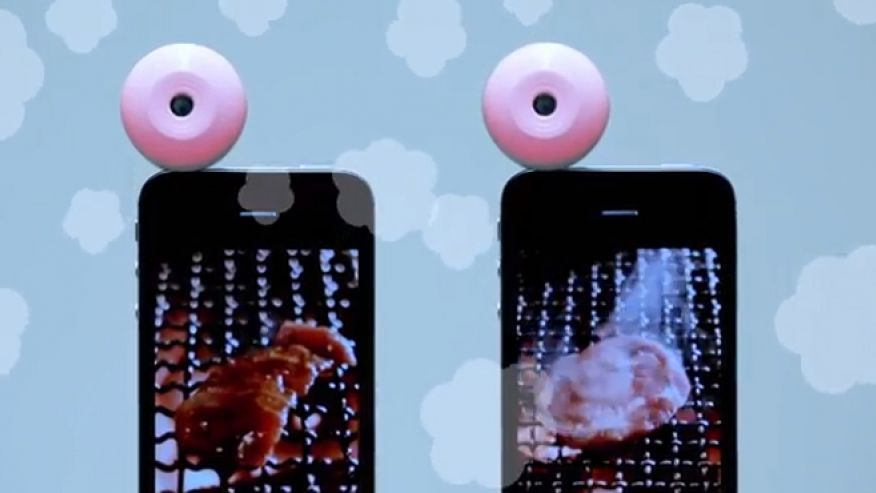Imagine an Apple iPhone that smells like an apple or a Blackberry that taste sweet or a Windows Touch-phone that squeezes you in mid-conversation. Scientists in London have made more progress in the now-common smartphone to make the audio-visual communication transcend tool what engineers call “the glass barrier” and create an experience that is more 4-D.
Professor Adrian David Cheok of the University of London said of his technology, “In the real world, we can open up the glass, open the window. We can touch, we can taste, we can smell in the real world.”
How do inanimate smartphones deliver the sensation of senses?
First you will have to open your mouth and say, “Ah!” The human tongue’s surface has molecules, also known as tastebuds, that through chemical ionization send the brain electrical signals of a specific amplitude depending on which type of taste: sour, sweet, salty, and bitter. Scientist have found a way to send these signals — minus the calories — to savor. This process was explained by Professor Cheok.

“You put these two silver electrodes in your mouth, you put your tongue in between and then it stimulates electrically your tongue and you get a virtual taste perception in your brain.” So far, scientists have reproduced sour, salty, sweet and bitter tastes, it will take further exploration to make all the taste we are accustomed to eat like Bacon.
At the push of a button you are now able to deliver an array of scents to smell. The device and app “Scentee” is an attachment to plug into your smart phone that holds a cartridge of 100 different smells, from fresh fruits, lavender or jasmine, to fresh ground coffee, that can be sprayed when prompted by the other side of the conversation. Professor Cheok relayed, “Basically what happens, we have an app, it connects to the Internet and then this will release scent from your mobile phone.” Think of the added benefit of sending your friend a hint of lemon scent when they say they are having a bad day or the scent of cookies because you know they are not hungry when you are.
Have you even been in a conversation and the other person for a moment stops paying attention or loses focus? Well, as long as you put a ring on them that is connected wirelessly to your smartphone, you can gently squeeze their finger to regain their attention or focus in mid-conversation. “I can be in London and my friend can be in Tokyo, and I can squeeze my finger and then they’ll get a squeeze on their finger through the Internet. It’s a way of touch communication with small mobile devices,” said Professor Cheok.
With the development of smart technology, from phones to homes, the barriers of pan-sensual communication will soon be memories of the past. Professor Cheok hopes the devices developed will soon be added to smartphone and homes to further transcend the current limitations of long distance communication.
By Mark A.G. Cox
